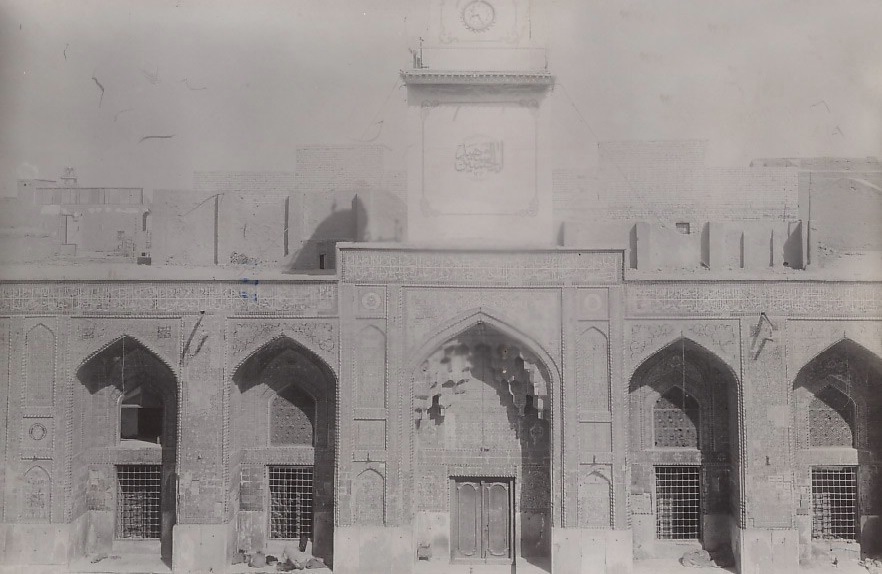Between 1935 and 1948, the municipality of Karbala implemented a project to open a road around the shrine of Imam Hussain (A. S. ) which was claimed to be for the purpose of easing traffic congestion and movement of pilgrims in this area.
However, the incompetence and lack of knowledge in architecture, art and intellect of the government officials in those days led to the disappearance of Karbala's most beautiful Islamic architectural monuments which constituted part of the building of the shrine of Imam Hussain (A. S. ) which was lofty and glorified for many centuries. One of the most important of these buildings was the well known al-A hid minaret which was considered one of the architectural edifice of the city and also the small sahail (courtyard) annexed to it, some of the institutions, religious schools and the mosques.
This project could have been designed to meet traffic requirements, and the city centre's future development and at the same time avoid the demolition and disfigurement of the city had the officials used proper planning and design to preserve the monumental buildings and the heritage of the city.
In 1954, the Iraqi government started construction work to build the new al-Iskan quarter which was allocated for the civil servants working in Karbala. This quarter lies about 3 kilometres to the south west of the city centre.
In 1955, the Mutassarif (governor) of Karbala, Hussain al Sa'ad, set up the new al-Hussain quarter which lies about 3 kilometres to the south west of the city centre on the new Karbala- Najaf Road and adjoining the al-Iskan quarter. This new quarter is considered one of the most important modem quarters still in existence in Karbala today. It was designed in a circular shape with the tourist Karbala hotel in the centre and surrounded by gardens from all sides.
Source:
- Holy Shrines of Karbala: By Raouf Mohamed Ali Al-Ansari
[p 104-105].

